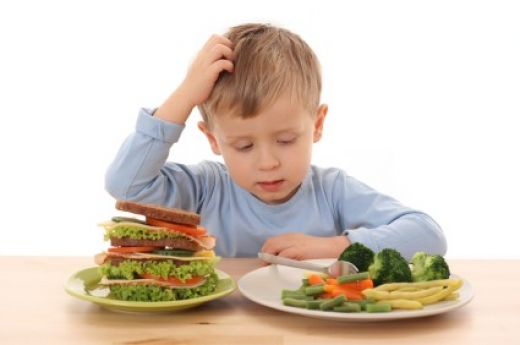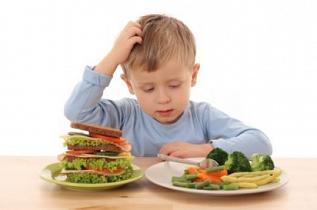Vitamin D to Magnesium: Healthy Eats for Kids

It's not easy feeding fast-growing kids in a fast-food world: The hot lunches at school often consist of hot dogs, chicken nuggets, and other processed foods, and if your homemade lunch isn’t tasty enough, your children are more likely to mooch junk food from their friends. The biggest challenge is to fix meals your kids want to eat that also deliver all the vitamins and minerals they need. And lest you worry about being fussy or overprotective, consider this:
More and more research suggests deficiencies in nutrition can lead to behavioral, developmental, and health problems—everything from allergies and asthma to ADHD. (Blood testing may reveal a severe nutrient deficiency, but your child can be missing out on nutrients without being clinically deficient.) And it’s not just “superstar” nutrients like omega-3 fatty acids, calcium, and vitamins C and A that kids need.
Even if you get your children to eat, say, fish, broccoli, and carrots (certainly an achievement), there’s still a world of nutrients they may be missing. We consulted the experts, who all agreed that focusing on real foods is the way to go. “Any food found in nature is a superfood…and all will provide a much better balance of nutrients than a processed, fortified ‘food product’ can,” says Ashley Koff, a registered dietitian in Los Angeles, Calif.
With her help and the help of others, we compiled this list of must-have vitamins and minerals and the kid-friendly foods that contain them.
Magnesium
WHY KIDS NEED IT: Magnesium is as important as calcium for children’s development, says Koff. In fact, the two work together—calcium is a muscle contractor and magnesium is a relaxant—to help kids get a good night’s sleep, build strong bones, regulate blood sugar, support a healthy immune system, and keep nerves and muscles functioning properly.
SIGNS YOUR CHILD ISN’T GETTING ENOUGH: “Twitchy” legs or restless leg syndrome, inability to settle down at night, muscle cramps, constipation, fatigue, weakness, anxiety, and hyperactivity.
HOW MUCH KIDS NEED: 110 mg for kids ages 4 to 8; 350 mg for children ages 9 to 13.
WHERE TO FIND IT: Soybeans, legumes, whole grains, nuts, seeds, and green leafy vegetables.
Fun Magnesium rich foods:
-- 2 ounces pumpkin seeds (300 mg) -- Toss lightly in oil and sprinkle with sea salt, then bake on a cookie sheet for 15 minutes at 425˚F.
-- 2 tablespoons almond butter (97 mg) Make an almond-butter sandwich for a magnesium-rich alternative to peanut butter and jelly... -- 1/2 cup black beans (61 mg) Grind beans in a food processor with a bit of garlic, salt, and lime or lemon juice. Serve with baked tortilla chips for dipping...
-- 1/2 cup oatmeal (56 mg) Bake into an oatmeal-raisin cookie or serve for breakfast with cinnamon, honey, and nuts.
Zinc
WHY KIDS NEED IT: By flushing out heavy metals like lead and aluminum found in vaccines, zinc is absolutely essential to brain and nerve development and a strong immune system, says Bonnie Minsky, a nutritionist and president of Nutritional Concepts in Northbrook, Ill. Zinc is critical for proper growth and normal sexual development.
SIGNS YOUR CHILD ISN’T GETTING ENOUGH: A weak immune system (getting every “bug” or illness that goes around), low attention span, poor motor function, and slow growth.
HOW MUCH KIDS NEED: 5 mg for kids ages 4 to 8; 8 mg for children ages 9 to 13.
WHERE TO FIND IT: High-protein foods like grass-fed beef, free-range poultry, nuts, beans, legumes, whole grains, and some seafood like crab and lobster.
FUN ZINC-RICH FOODS:
-- 3 ounces free-range turkey (3.8 mg) Shred for turkey tacos.
-- 1 ounce cashews (1.6 mg) Fold into baked goods for a sweet zinc boost.
-- 1/2 cup chickpeas (1.3 mg) Add to pastas, salads, or soups for a flavorful, nutty topping.
Vitamin D
WHY KIDS NEED IT: Vitamin D is crucial to building strong bones and decreasing the risk of diabetes, asthma, and allergies. Although labeled a vitamin, it’s actually a hormone and isn’t found in many foods. In fact, the best source is exposure to sunlight but because today’s children don’t spend as much time outdoors (and wear sunscreen and sun-blocking clothing when they are outside), many are deficient in vitamin D (some clinically), according to pediatricians and other health experts.
SIGNS YOUR CHILD ISN’T GETTING ENOUGH: Muscle pain, weak bones or teeth.
HOW MUCH KIDS NEED: 400 IUs per day for all young children — including infants WHERE TO FIND IT: Fatty fish, shiitake mushrooms, egg yolk, fortified milk, and other “vitamin D fortified” foods. Fortified foods usually contain a synthetic version of vitamin D, called D2, that’s not as readily absorbed as the natural version, known as D3, says Kandice Stellmon, a nutrition consultant with Whole Child Wellness in Belmont, Calif. If your child needs a vitamin D supplement, choose one with D3. It’s more expensive but much more effective than D2.
Fun Vitamin D-rich foods:
-- 4 dried shiitake mushrooms (249 IU) Sauté a few of these flavorful mushrooms with olive oil before sprinkling them on a homemade pizza.
-- 1 egg yolk (25 IU) Mix up some deviled eggs for a smoother, more kid-friendly texture.
Potassium
WHY KIDS NEED IT: Potassium does everything from keeping the heart, muscles, and digestive tract functioning properly to keeping the body hydrated by helping to draw water into cells. “Even when children drink plenty of water, without enough potassium they may be dehydrated,” says Los Angeles dietitian Koff.
SIGNS YOUR CHILD ISN’T GETTING ENOUGH: Weakness and fatigue, muscle cramps, and digestive problems.
HOW MUCH KIDS NEED: 3,000 mg a day for children ages 1 to 3; 3,800 mg per day for kids ages 4 to 8; 4,500 mg per day for children ages 9 to 13.
WHERE TO FIND IT: Colorful fruits and veggies like tomatoes, sweet potatoes, and greens
Fun Potassium-rich foods:
-- Medium potato, skin on (620 mg) Cut into strips, toss with oil, and bake on a cookie sheet.
-- 1/3 cup spinach (280 mg) and 1 medium banana (420 mg) Blend spinach and banana with honey to taste and gradually add water until it reaches a smoothie consistency. Pour into popsicle molds and freeze.
-- 1 avocado (975 mg) Mash with 1 clove garlic and 1 teaspoon of lemon juice and serve with carrot and celery sticks or red pepper strips for dippin.
Comments
There are 0 comments on this post













